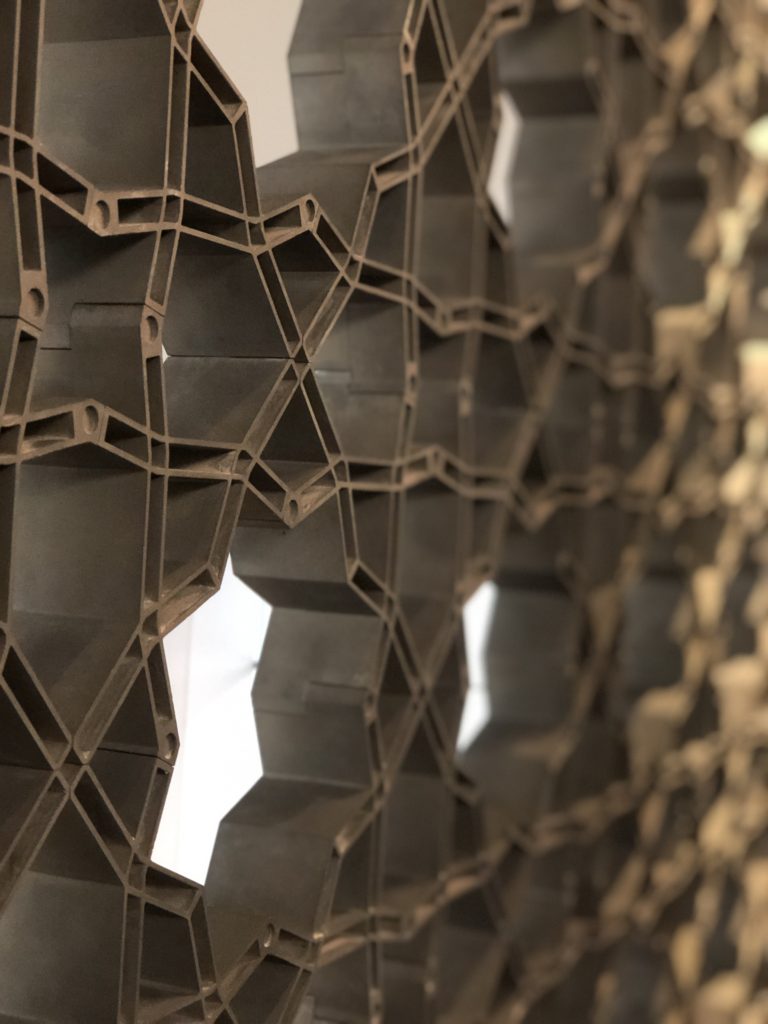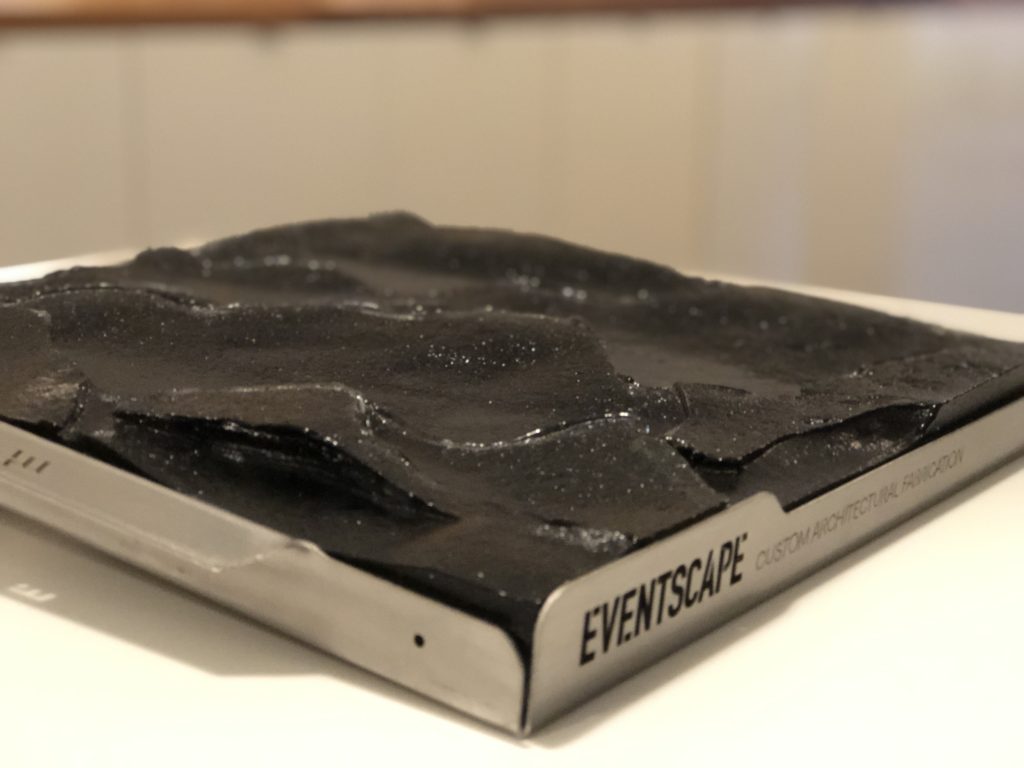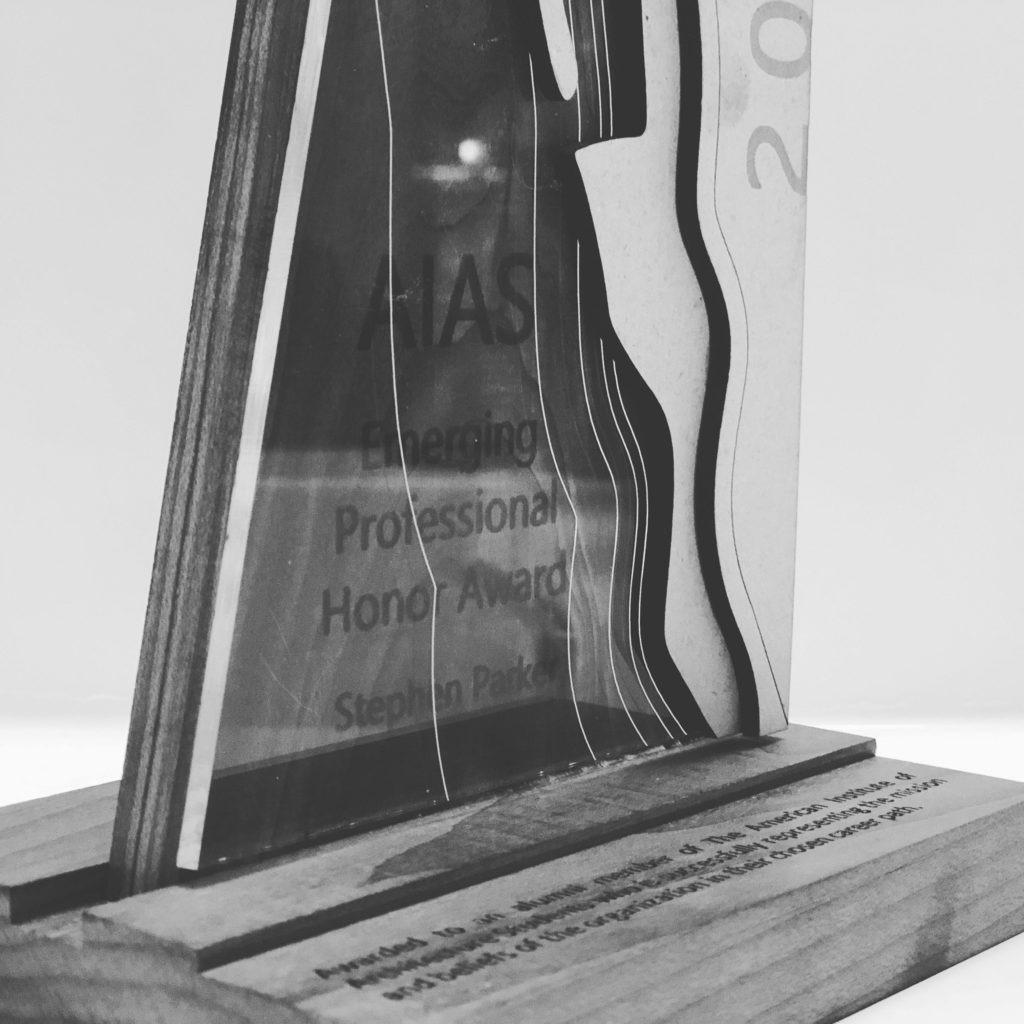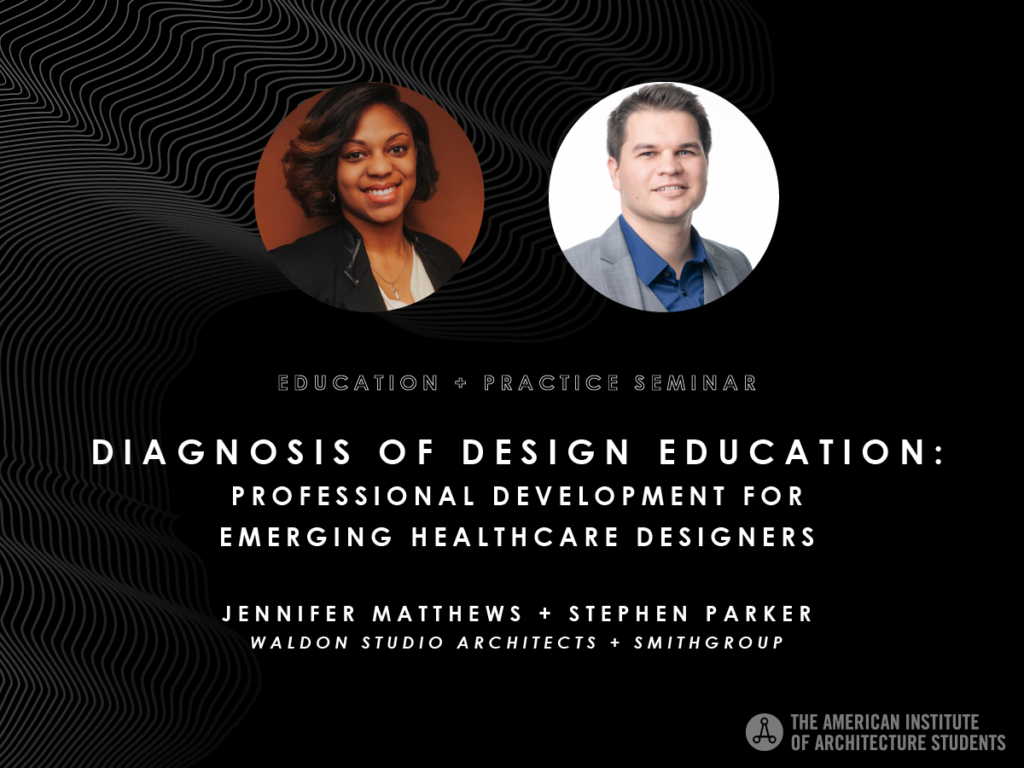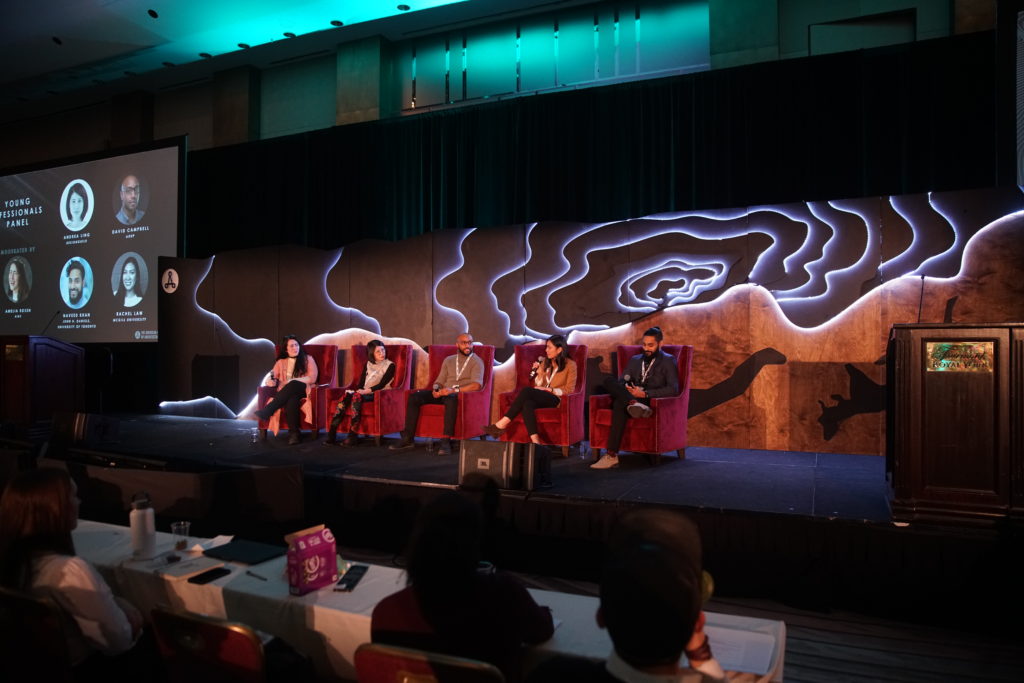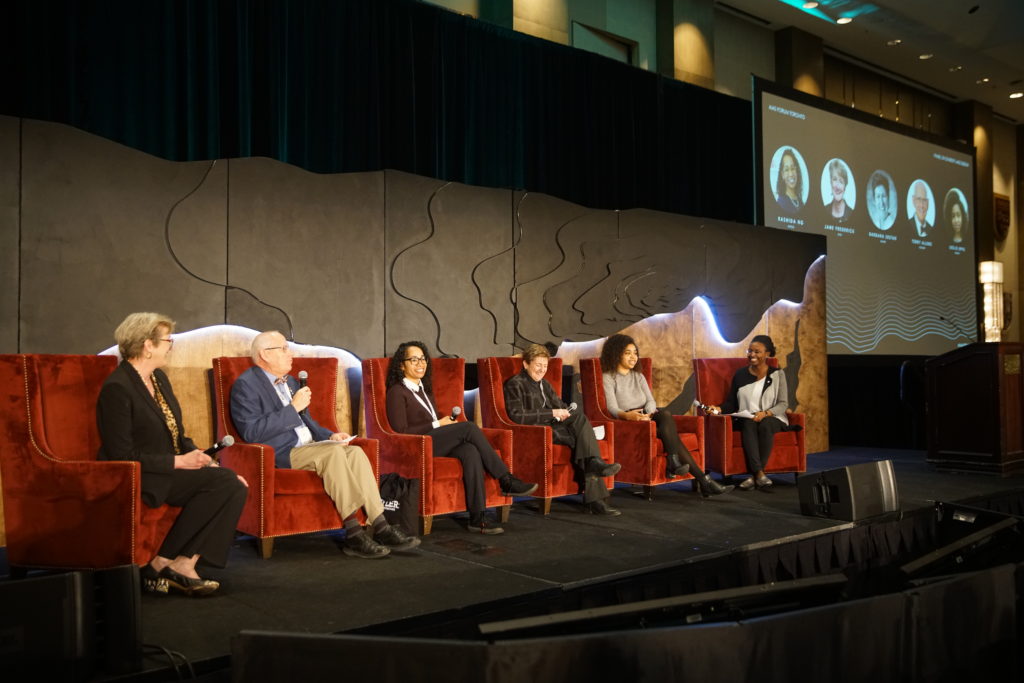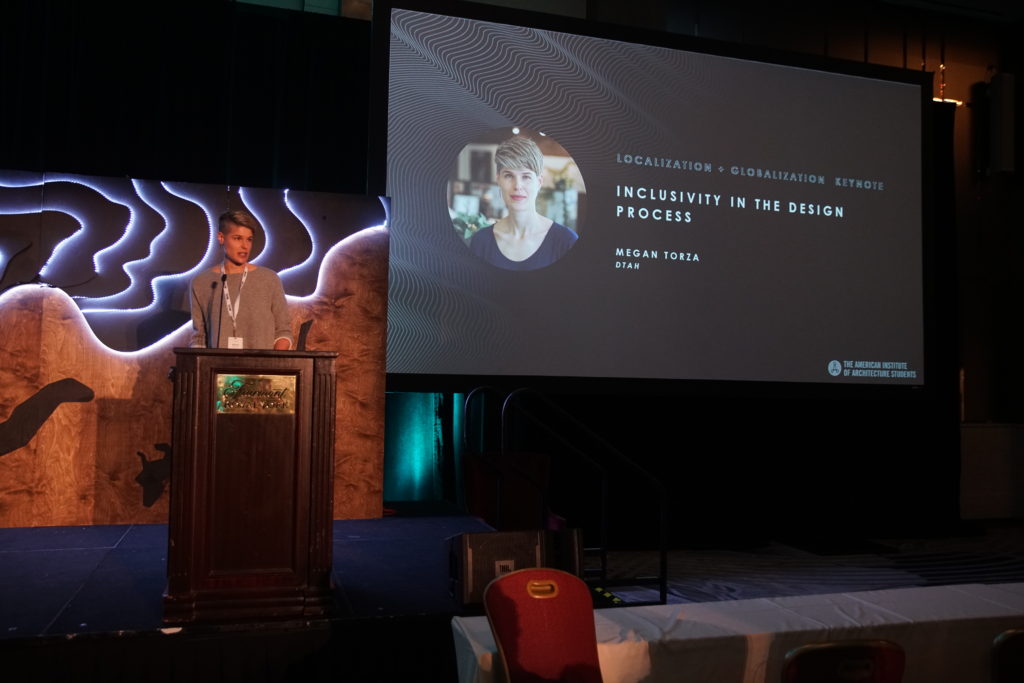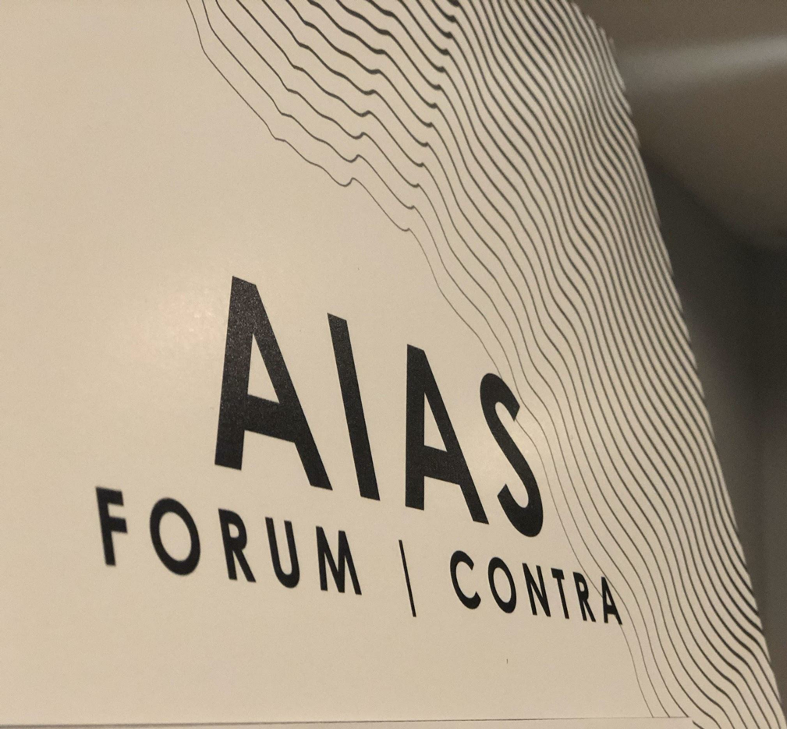For the rising tide of young designers, this year’s Contra-themed AIAS Forum challenged contrasting beliefs, contradictory approaches, and controversial topics of discussion in architectural practice and education.
By Stephen Parker, AIA NCARB LEED AP BD+C,
Architect + Planner, SmithGroup
Editor’s Note:
Architect and planner Stephen Parker, AIA NCARB LEED AP BD+C, is based out of SmithGroup’s D.C. offices, specializing in healthcare with an emphasis in behavioral health design. As a community designer and advocate, Stephen writes about community-driven design topics & issues of impact in the AEC industry as part of the Hunter Douglas Architectural’s Young Architects Roundtable. Stephen previously served as the AIA’s Young Architects Forum National Advocacy Director & co-founder of the AIA’s National Design Services Act (NDSA) Coalition. He is a recipient of the 2018 AIA Young Architect Award, the 2019 HCD Rising Star Award & most recently, the AIAS Emerging Professional Honor Award. Parker was elected as an At-Large Representative to the AIA’s Strategic Council as its youngest architect, leading as a Class Representative and Co-Convener of the Mental Health + Architecture Incubator on the Council. Parker shares, in his own words, his experiences at the AIAS Forum.
This past New Year’s, the largest gathering of architecture and design students converged along the shores of Toronto, Canada for Forum, the annual AIAS conference. I had the opportunity to speak with many of them (and picked up an award!) and catch up with the rising generation of architects. Ask any educator, and they will tell you that the energy around students is infectious. This conference was no exception. From silent discos to thrilling keynote speeches, the enthusiasm was evident. Themed around ‘contra’ conference organizers asked attendees to explore the idea of opposition and offered this as a summons. “As we reflect on the past year and the current extremely polarizing state of social, political, and environmental issues, we challenge contrasting beliefs, contradictory approaches, and controversial topics of discussion in architectural practice and education under the theme CONTRA.”
While touring the city – and attending sessions with students from across the country and beyond – it was clear there was excitement around several topics. Still, the anticipation of graduation and entering the profession was undoubtedly top of mind.
And, while seeking full-time employment is a simultaneously exhilarating and anxiety-inducing feeling for any young designer, it was most interesting to hear what they wanted to accomplish in their next stage of career—namely having an impact, a purpose, a mission.
As alternative paths in the profession become more established, the value proposition of the field will begin for many to shift. Several tours of firms were offered, but other employers such as fabricators and visualization firms also participated. Eventscape, a Toronto-based custom fabricator, was one such company. As architecture becomes more complex, these types of specialists are increasingly common. This is part of a larger pattern of design-assist partnerships needed to construct more sophisticated buildings.
One persistent question that came up was how to design meaningful, impactful work. As a knowledge-driven profession, much of the initial experience we have in the job is task-oriented, and many recent graduates can find it frustrating, notably when they are missing the full picture. Some studios mentor differently than others, but I repeatedly came across this observation from recent graduates. Part of this has to do with the skill sets a student possesses when coming out of school vs. what a firm might need. Firm leaders sometimes have to fill in the missing gaps in this continuum of experiences for the emerging professionals they lead. That’s why it’s critical to see projects through to completion. From concept to construction, detailing what you design is of such immense value. Allowing recent graduates to gain that experience is the responsibility of their supervisors and managers. When that isn’t possible, allowing younger staff to see that bigger picture is vital. Consider experience to be surface area, the more access to those with the broader knowledge of the profession is the best way to absorb that expertise. Inviting younger staff to site visits, client meetings, and other aspects of practice are essential.
This is important for a more practical reason as well. Since the technology gap is as cyclical as the economy, it takes consistent mentoring from both sides. Younger staff have the production skills and can “mentor up” to senior teams who have years of experience yet need to learn how to manage new workflows that each new software requires. Neither can work without the other.
As critical, recent graduates should identify what’s missing and seek it out. Not just within the office but beyond. In the age of the gig economy, it’s more possible than ever before to seek additional experiences. With the right opportunity, mentor, or partner, it can be an avenue to fill experience gaps. As well, there are plenty of pro-bono projects and non-profits doing impactful work that could use the help of passionate, aspiring architects. Those hard-to-find construction administration (CA), practice, and project management hours are easily obtained when leading a team and designing for communities in need. Given the amazing initiatives such as AIAS’ Freedom by Design program, this is just one example of students taking their passion and applying it with purpose.
Speaking to purpose, Freedom by Design recently saw an expansion of its mission. For 15 years, FBD programs at universities across the world have helped differently-abled clients achieve the same freedom of movement we all enjoy, by designing and rebuilding homes to fit their needs. As the rising generation expands its values to include a carbon positive future and other social issues, the vision of these students will reflect such and amplify their voice. By addressing carbon in the built environment, students are striving to evolve beyond sustainability to a net positive future and regenerative design. It’s no longer how efficient the building systems are, but expanded to include how materials are sourced and how equitable the manufacturing process is to workers. Going beyond energy modeling to how much carbon is sequestered and how much your design can give back to the environment. This ranges from limiting concrete and considering alternatives such as limecrete or mechanical foundations, instead of always specifying steel, exploring timber or glulam components for structural systems. Insulation made from renewable resources that capture carbon is another exciting avenue or building façades that breathe in CO2 and generate clean air. While these may be considered alternative approaches, they are gaining traction as a mainstream value.
This is driven in part by the school curriculum, but also by the experimental nature of studio culture. The realities of practice haven’t yet set in, which breeds creativity. As these design advocates are seen making waves out of school, we can only hope they ripple out into the profession. Perhaps that is the sea change we need to lift all boats.
While speaking on healthcare design for emerging professionals, my co-presenter Jennifer Matthews, Assoc. AIA and I heard from many students on a number of advocacy issues. Students were advocating for everything from resilience to equity and equal pay, and it was invigorating! Many students lamented the low pay starting out in the profession, compounded by astronomical student loan debt and rising housing costs isn’t helping. A diverse Young Professionals Panel touched on a myriad of these issues and challenges facing emerging designers breaking into the field, and it was heartening to hear a shared vision, a vision for a more inclusive, vocal and impactful profession.
A frustrating topic was the economic model most firms endure. The race to the bottom is a typical fee structure used throughout the industry. This, unfortunately, squeezes the bottom of that pyramid the most. More entrepreneurial models are developing, and not surprisingly, at start-ups and agile small firms. Some good examples can be found coming out of the Charrette Venture Group investment incubator and the AIA Young Architect Forum’s program, the Practice Innovation Lab. For everyone else, gaining higher pay comes most often from “boomeranging” or changing jobs. While this allows for other experiences, it can breed a culture of itinerant employment for younger staff wishing to move up the socioeconomic ladder. To afford a home or grow a family, substantial pay bumps seem to occur most often once you leave. This frustrates recent graduates that are afraid of being seen as non-committal if they have less tenure than what they perceive firms want in staff. Considering the cost of replacing an employee can be as high as twice their salary, it should motivate firms to think what a 10, 15, or 20% pay bump could mean for their teams. The essence of this argument is value. How much aspiring architects value themselves, how much firms value their people, and how much society itself values architects. These are conjoined issues, and we as a profession will need to have frank discussions to address them equitably.
In regards to equity, it was the focus of a keynote panel led by AIAS President Sarah Curry. One often-quoted statistic is that 50% of graduating architects are female, yet the profession doesn’t reflect that. Even more concerning is the lack of diversity in the profession. One metric is licensure, with a severe lack of representation at this crucial milestone for architects. Keynote speaker Megan Torza elaborated further, touching on inclusivity in the design process. If the profession isn’t inclusive, then how it interacts and shapes the community in the design process will struggle to be inclusive as well.
This rising tide of young designers is already tackling the challenges before them. All in all, I came away feeling energized and humbled by their values and vision.


